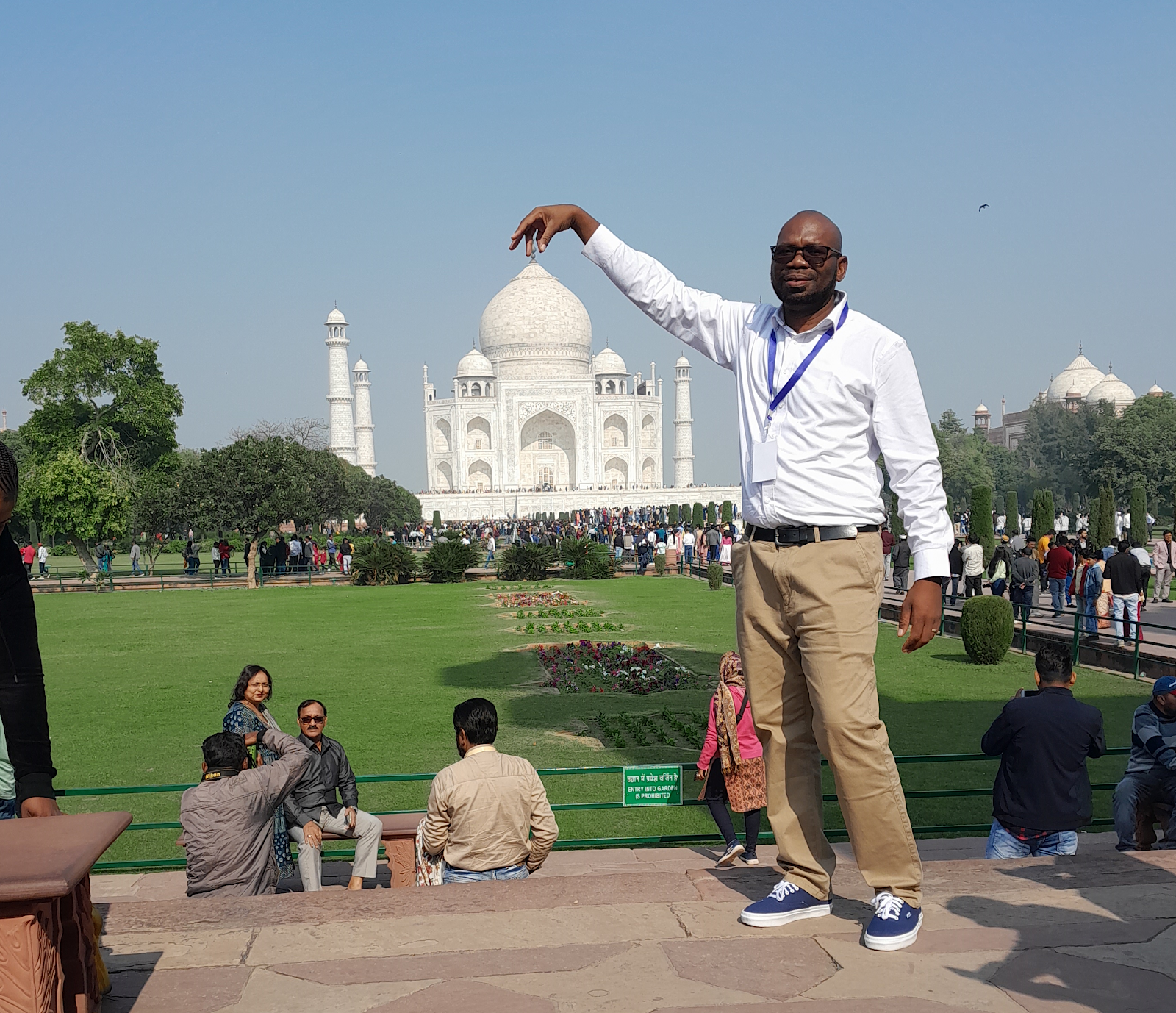Travelogue: Unforgettable Delhi
 |
 |
| According to government figures, Delhi has as many as 60,000 stray dogs. |
 |
| Delhi has millions of automobiles on its roads, that are also responsible for the air pollution in the city. |
JACK ZIMBA
New Delhi, India
AFTER driving for over three hours under a misty
blanket on the Yamuna Expressway from India’s capital, Delhi, we finally
arrived in Agra, in the
state of Uttar Pradesh.
And
after weaving through an endless stream of human traffic, we finally entered
the grounds.
And there, under the warm glow of the morning
sun, the magnificence of the Taj Mahal shone like a pearl rising out of the
Yamuna River, on whose bank it sits.
At that point, my dream should have ended,
but this was no dream at all. I was standing before the Taj Mahal.
It is hard to describe the Taj Mahal without
running out of superlatives, or running the risk of losing one's journalistic
objectivity (if one must REALLY be objective in describing a masterpiece).
Standing before the Taj Mahal, I got that
same feeling I experienced standing on the Great Wall in China. I was awestruck
by what human ingenuity can achieve.
The Taj Mahal isn't really a building, but the
love of a king to his wife immortalised in marble.
Built in the 17th century, the Taj
Mahal is regarded as one of the wonders of the world ever made by man, and
about 100,000 people visit the site every day.
But, of course, there is more to India than a historical masterpiece.
With
1.4 billion people, diverse culture, religion and a thriving democracy, India is
such an intriguing – and definitely complex – country, something that can be
witnessed and experienced on the streets of the capital, Delhi.
My
first introduction to Delhi was its traffic.
Rickshaws and motorbikes appear from nowhere and squeeze between larger cars,
and no-one really sticks to their lanes.
With a population of 35 million, Delhi is a city bursting at
the seams, and every hour is rush hour.
Think of a beehive – that is what Delhi traffic looks and
sounds like. There is a constant buzz and beep-beep from a reported seven
million automobiles on the city’s roads (the figure goes up to 13 million on
paper).
The
result of which is the grey blanket of smog that
has become an almost permanent feature over the city, making tall buildings
appear like ghost castles from a distance.
There are signs within the
city that clearly prohibit honking and blowing of horns.
Paradoxically, there are
many pick-ups and trucks that I saw bearing a message on the rear side urging
other motorists to honk or blow their horns. It is clearly a safety measure in
the crazy traffic.
Throughout my stay, I could not but wonder how anyone would
make it out alive on the city roads.
At one point, I sat on a bus at a busy
intersection and was almost certain I was going to witness an accident. Nothing
happened, to my relief, but there were many close brushes and hair-raising
moments even in that brief moment.
And while Delhi most definitely does not have clean air, it
has managed to keep its streets green – most of the roads are lined with trees and
there appears to be a deliberate effort to green the city.
But also unmissable on the streets of Delhi are the stray
dogs that can be seen on almost every street, including in some unexpected
places, such as the airport car park and university campuses. It is not unusual
to see dogs at bus stops as if waiting to board a bus.
According
to government records, Delhi has over 60,000 stray dogs. They do not
particularly seem to pose any threat, and seem to have mastered the streets and
how to avoid ending up as roadkill.
In September, as part of preparations for the G20 Summit,
hundreds of stray dogs were rounded up and taken to shelters, although they don’t seem
much of a nuisance as the red-faced rhesus macaques, known to wreak havoc
sometimes.
One
afternoon, we encountered one gang while driving around a well-guarded part of the
city, where important government offices, including the prime minister’s office,
are situated.
But what I was really relishing to do before leaving Delhi was
to venture out and experience the city on my own accord, rather than being
chaperoned by government minders on an official tour bus.
One late evening, my colleague and I were cajoled by a total
stranger to go to a clothing factory on the periphery of the city to buy some
outfits. Despite our suspicions and fears, we decided to take the risk and squeezed
into his tiny Suzuki Alto, the car that is ubiquitous on Delhi’s roads.
Soon, we were hurtling down the road, with
headlamps flashing and horns blaring all around us in a dazing manner.
It was one of those crazy, don't-tell-my-mama
ideas.
Raji Kumar, as we would later learn of the
stranger's name, drove with a devil-may-care attitude, changing lanes
unexpectedly and cutting in front of other fast-moving cars, all the while
chatting with us.
Incredibly, Raji said he has only had a few
minor accidents since he started driving 12 years ago.
"It's all by the grace of God," he said,
when I expressed my incredulity.
You have to believe his statement, as Delhi does
have a high accident rate.
Raji
also embodies India’s aspirations and spirit of persistence – he could not take
no for an answer, to the point of being bothersome.
Raji, whose grandparents were emigrants from neighbouring
Pakistan, is a Modi fun, and he talked about the prime minister as though he
were a semi-god.
The fact that I had seen Narendra Modi peering
from every street corner on billboards almost validated his point of view. The
billboards were mounted during the G20 Summit.
But the prime minister is definitely a cult
figure here. And with elections coming up in a few months, it's an envious position
for any politician.
“I’m
an Indian and I love India, and our government this time – BJP – powerful government. Modi is a good
man. I love Modi. Modi is a rock star,” said Raji in heavily accented English.
But
of course in a very diverse political landscape with a thriving democracy that
India is, not everyone is a Modi fun.
I
met one government official who thinks the high taxes are hurting India’s
working class.
However,
she could not rule out another Modi victory in the coming election.
On the global stage, Modi is also still basking in the
adulation of pulling a chair for Africa at the G20 back in September.
"The whole world is one family" is the
philosophy Modi is riding on.
And there are many of his citizens who believe
in that philosophy, including Raji.
"India and Africa are one," he said,
although he is suspicious of Nigerians. "They don't always speak
straight," he said.
Notwithstanding, Raji himself seemed like a
shady character although he swore to be an honest man, and maybe he is. But he
is definitely a naughty man who likes talking about sex. Jiggy jiggy, he called
it.
“It is wedding season in India, and winter time is for jiggy jiggy,”
he told us as we passed a car decorated with red flowers.
Indeed, I had seen a number
of wedding processions at the hotel where we stayed, which means more babies
for the world’s most populous country.
Delhi’s streets also bring
out both halves of Indian society – poverty and wealth.
“You can't do good to everyone, you can't do bad to everyone,”
was the conclusion of one journalist during a discussion at dinner, when we
mulled the complexity of leading 1.4 billion people with such a diversified
background.
And yes, India is a kaleidoscope of cultures,
including religious culture.
The Diwali decorations had hardly come down when we arrived,
and the Christmas trees were popping up in many places.
On a Wednesday afternoon, we
took off from Indira Ghandhi International Airport for Hyderabad, India’s tech
capital. Just a few hundred metres above, Delhi disappeared under the misty
blanket.



This blog is truly helpful for anyone trying to understand how online marketing works. The step-by-step explanations make even complex topics easy to grasp. Businesses that want to put this knowledge into practice can benefit a lot from consulting a reliable Digital Marketing Agency that focuses on data, strategy, and measurable growth.
ReplyDelete